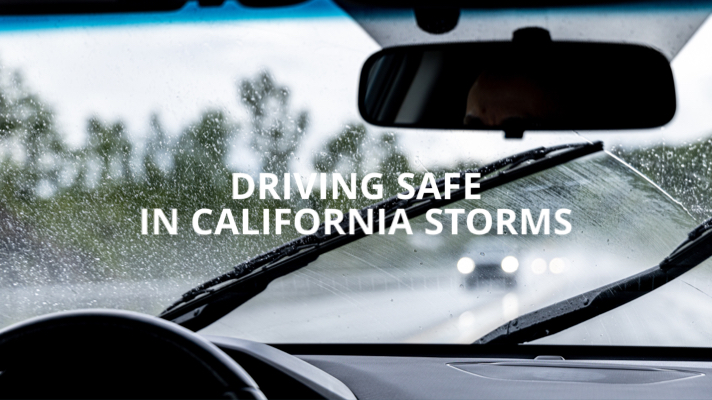Written By Chris Dolan and Anna Pantsulaya
This week’s question comes from Andrew from San Francisco, CA, who asks: With all the rain we have been getting lately, and the longer than usual rainy seasons we are getting now, how can Californians stay safe on the roads?
The Federal Highway Administration estimates California drivers log the most total miles per year, a whopping 340 billion, more than any other state. With all that time spent on the road, we must consider the effect of the influx of rain and how it will impact the safety of drivers. The Department of Transportation reported approximately 4,317 crashes while it was raining in 2021. With the expected increase in rain, those statistics will likely increase. About 15% of fatal crashes occur because of rain or wet roads.
When a driver takes control of a vehicle, they assume a responsibility to operate it safely in all conditions. This responsibility entails maintaining control and making every effort to prevent accidents. Driving safely, with all conditions in mind, is not only an expectation but also a legal obligation:
California Vehicle Code Section 22350 states,
“No person shall drive a vehicle upon a highway at a speed greater than is reasonable or prudent having due regard for weather, visibility, the traffic on, and the surface and width of, the highway, and in no event at a speed which endangers the safety of persons or property.”
For instance, a reasonable and prudent driver should not base their driving speed solely on the posted speed limit. If the road conditions, such as rain, are such that a reduced speed would keep others and their property safe, driving at or above the speed limit could contribute to liability if an accident occurs. Even if not technically speeding, the law requires drivers to adjust their driving according to the conditions.
Determining liability involves considering more than a driver’s speed in adverse weather. Various factors, such as ignoring road signs or traffic laws, inadequate use of windshield wipers or headlights, distracted driving, reckless behavior, operating a vehicle with worn-out tires, and failing to account for increased stopping time by not keeping a sufficient distance between you and the care in front, are all taken into consideration to assess negligence or liability for an accident.
Staying safe while driving in the rain requires extra caution and attention. Here are some tips:
-
Reduce Speed: Rain can make roads slippery, so slow down to maintain better vehicle control.
-
Increase Following Distance: Keep a safe distance from the vehicle in front of you to allow for increased braking distance.
-
Use Headlights: Turn on your headlights to increase visibility, especially during heavy rain or low-light conditions.
-
Avoid Cruise Control: Disable cruise control in wet conditions to maintain better control over your vehicle.
-
Check Tires: Ensure your tires have sufficient tread depth for better traction on wet roads. Consider replacing worn tires.
-
Brake Gently: Brake smoothly and gently to avoid skidding. Sudden braking can lead to hydroplaning.
-
Stay in the Middle Lanes: Water tends to accumulate in the outer lanes, so driving in the middle lanes can reduce hydroplaning risk.
-
Defog Windows: Keep your windows clear and use the defogging setting to maintain visibility.
-
Be Mindful of Puddles: Avoid driving through large puddles, as they may conceal potholes or other hazards.
-
Stay Informed: Check weather forecasts before driving and be aware of any road closures or warnings.
-
Use Turn Signals: Signal your intentions early, giving other drivers ample notice of your actions.
-
Be Cautious at Intersections: Rain can make roads slippery, so be extra cautious at intersections and give yourself enough time to stop.
Adapting your driving to the current weather conditions is crucial, and always prioritize safety. If the rain is too heavy, consider delaying your trip or finding a safe place to pull over until conditions improve.
Consequently, if you’ve been injured in an accident during adverse weather conditions, it is imperative to contact an attorney who is experienced in assessing all aspects of liability affected by weather conditions.
***
Disclaimer: Each situation is different, and this column does not constitute legal advice. We recommend consulting with an experienced trial attorney to understand your rights fully.










